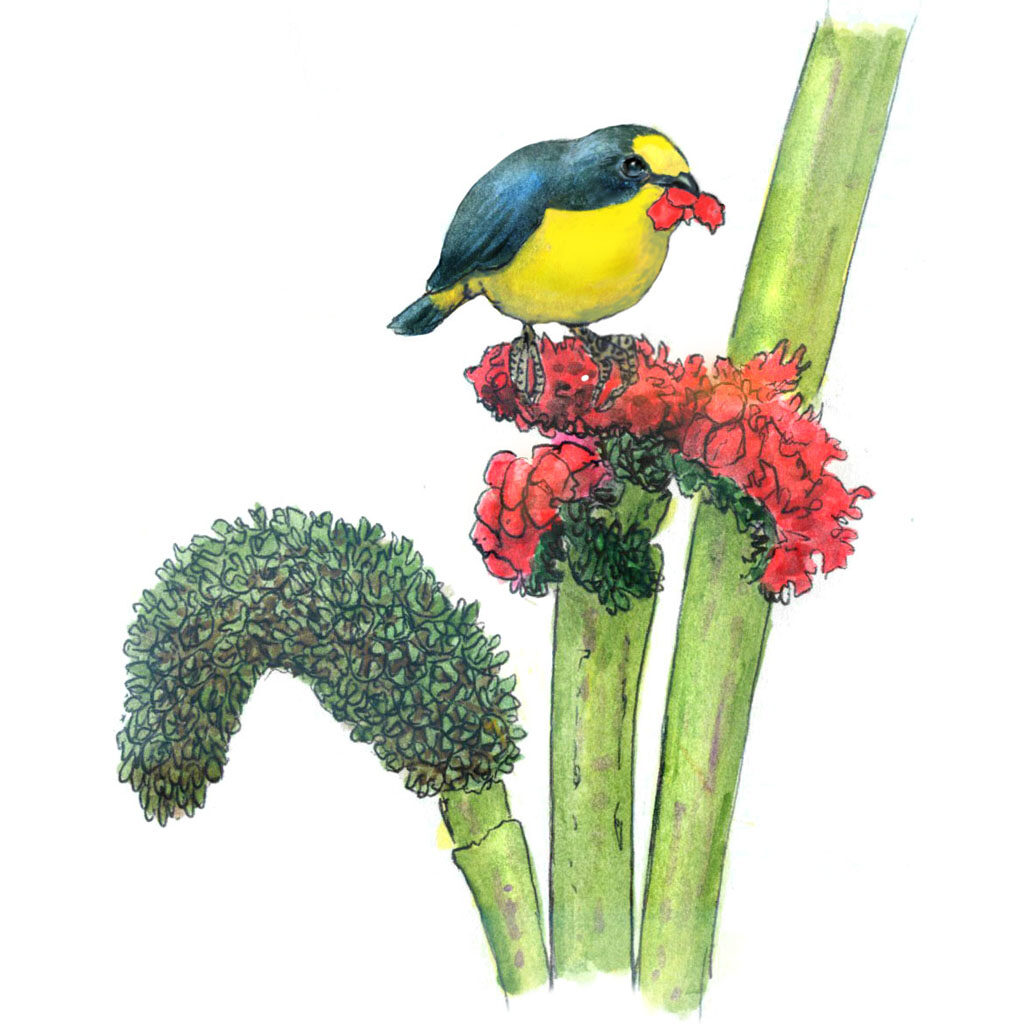Yellow-throated Euphonia

A pretty little bird the size of a sparrow, the yellow-throated euphonia (yew-FO-nee-uh) is a pleasing little bird that doesn’t mind living close to people. It ranges from Mexico to Panama in tropical lowlands, drawn to second-growth forests, cool forest edges, and shady plantations.
It may hollow out a nest in the detritus at the base of epiphytes (bromeliads, air plants, and orchids), or build it from scratch in shallow niches in cutbanks over roads or waterways. The latter type of nest takes a spherical form, built of leaves, rootlets, mosses and lichens, with an opening in the side hidden by lichens and moss.
The male is brilliantly colored blue-black and golden yellow, but the female is a drab grey and white underneath and greenish on the upper side.
A pair burrowed into the tangled root mass of a golden-shower orchid on my veranda one year, and I was able to watch them feed their nestlings from just a few feet away. They had a fascinating routine for entering the nest with food for the nestlings: pausing together in a twiggy tree about 20 feet from the nest, they would launch into the air side-by-side, but the brightly colored male would immediately fly upward in a flashy swoosh, to catch the eye of predators, so they wouldn’t notice the neutrally-colored female slipping into the nest with the food. They never varied their routine, and even knowing what would happen, my eyes left the female nearly every time to follow the action as the male flashed upward in a burst of yellow and electric blue.
Mistletoe berries make up about twenty percent of the euphonia’s diet. The berries are poisonous, but the euphonia cracks the outer casing and swallows the seed whole, its digestive system stripping the seed of nutrients before excreting it unbroken. The euphonia eats other fruits, as well, including figs and bananas, and an occasional insect. It is one of the few birds that feeds its nestlings on regurgitated fruit pulp instead of insects. More information can be found here.
I was devastated when a predator, perhaps an opossum, kinkajou, or aracari, found the euphonia nest and ate all the nestlings shortly before they would have fledged. The euphonia pair kept a vigil in their launch tree for two days, then left, never returning to their orchid root nest for another try.